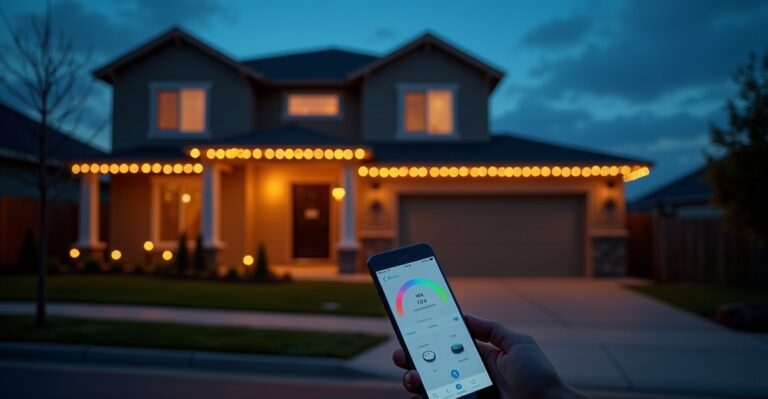Do Permanent Smart Lights Require Wi-Fi?
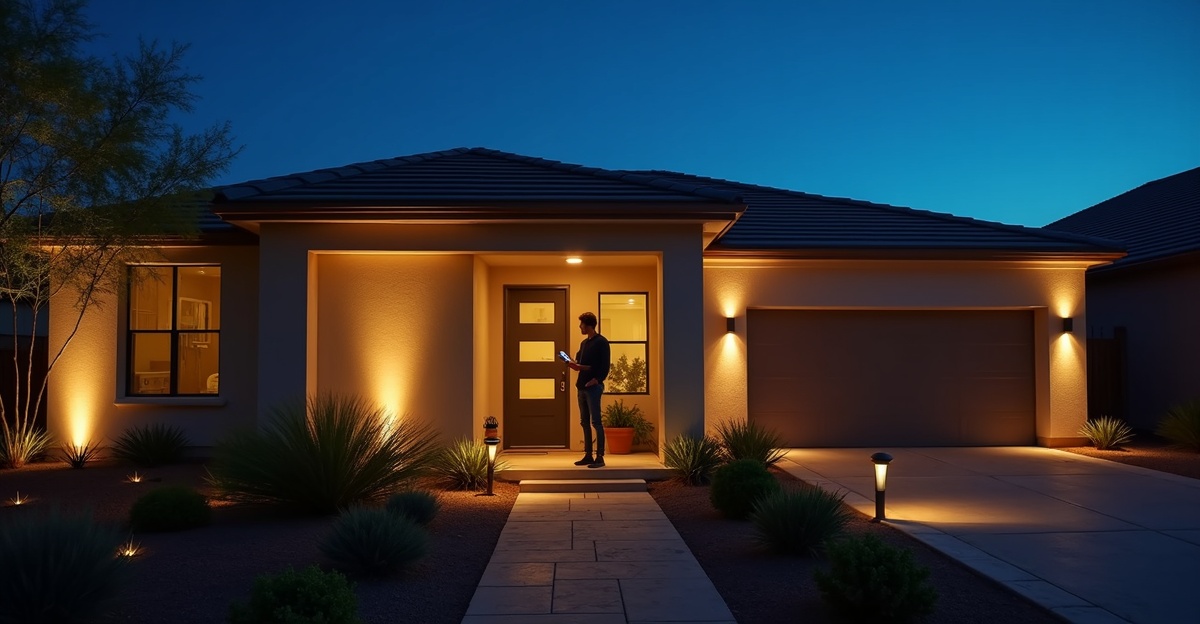
Not all permanent lights need Wi-Fi. Many reliable systems work through Bluetooth, built-in timers, or offline hubs. These give us full control—even when internet service goes out.
Key Takeaways
- Permanent smart lights can work without Wi-Fi by using Bluetooth, built-in timers, or offline control hubs.
- Wi-Fi-based systems give full remote access, advanced customization, and voice commands—if our internet connection stays strong.
- Local memory features keep schedules and routines active without relying on online service.
- Bluetooth setups suit smaller areas and operate fully without needing any internet.
- Hardwired systems deliver steady, low-effort performance without any wireless link.
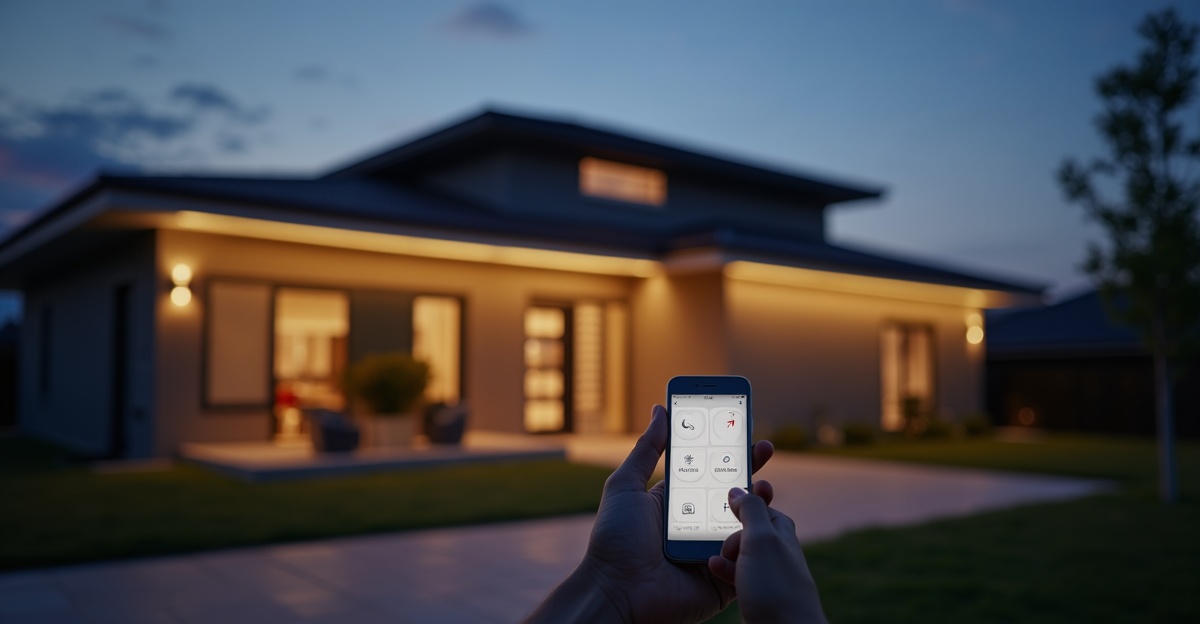
When Do Smart Lights Actually Need Wi-Fi?
Not all permanent smart lights need Wi-Fi. Plenty of quality systems work just fine without it. Some rely on Bluetooth. Others use direct-to-app communication or are hardwired into your home’s existing setup. So if you’re wondering, do permanent lights need Wi-Fi to shine bright and stay smart—good news: the answer’s no.
How Smart Lights Can Work Without Wi-Fi
Permanent smart lighting isn’t one-size-fits-all. While Wi-Fi-based systems are popular, several alternatives offer control and scheduling without needing constant internet access. Many homeowners are surprised to learn:
- Bluetooth-connected lights can be controlled through a smartphone within range—no Wi-Fi required.
- Some systems use local hubs that connect to your device via radio frequency or Zigbee, meaning settings are stored and handled locally, not online.
- Hardwired smart lights can often be set up once with an app, then operated on a consistent schedule, even if Wi-Fi goes down.
As long as you’ve set everything up during a time your network is stable, many systems continue to run their routines without needing to stay online.
Common Myths About Smart Lighting and Wi-Fi
We’ve heard it often: “Smart lights won’t work if the Wi-Fi goes out,” or “You can’t control permanent lighting unless you’re connected to the internet.” Here’s where those don’t hold up:
- Setup: It depends on the system. Some require internet for the first install, but after that, minimal online use is needed.
- Scheduling: Many systems let you store schedules on the device or hub itself, meaning those sunup-to-sundown routines go on without disruption.
- Reliability: A spotty internet connection doesn’t mean your lighting has to suffer. What it really means is picking smart fixtures that match your setup and lifestyle.
This concern—do permanent lights need Wi-Fi to run smoothly—is tied to something we completely understand: people want lighting that works every time, no hiccups, no drama. Especially when the power flickers or the router feels moody.
Lighting That’s Bright Even Without Perfect Internet
Your home deserves dependable lighting that looks stunning night after night. If Wi-Fi isn’t your home’s strong suit, you’ve still got options. From Bluetooth control to hardwired simplicity, there are smart lighting systems that suit nearly any setup.
Here’s what you can do to enjoy the benefits without the burden:
- Choose systems that store routines locally.
- Talk to installers about using standalone hubs instead of full Wi-Fi dependency.
- Opt for lighting styles like under-eave lighting with manual override switches for extra control during outages.
And if you’re still deciding whether smart lights are the right fit, check out how smart outdoor lighting boosts curb appeal and simplifies daily life.
Not having perfect internet doesn’t mean you can’t have breathtaking, reliable lighting that works when you need it.
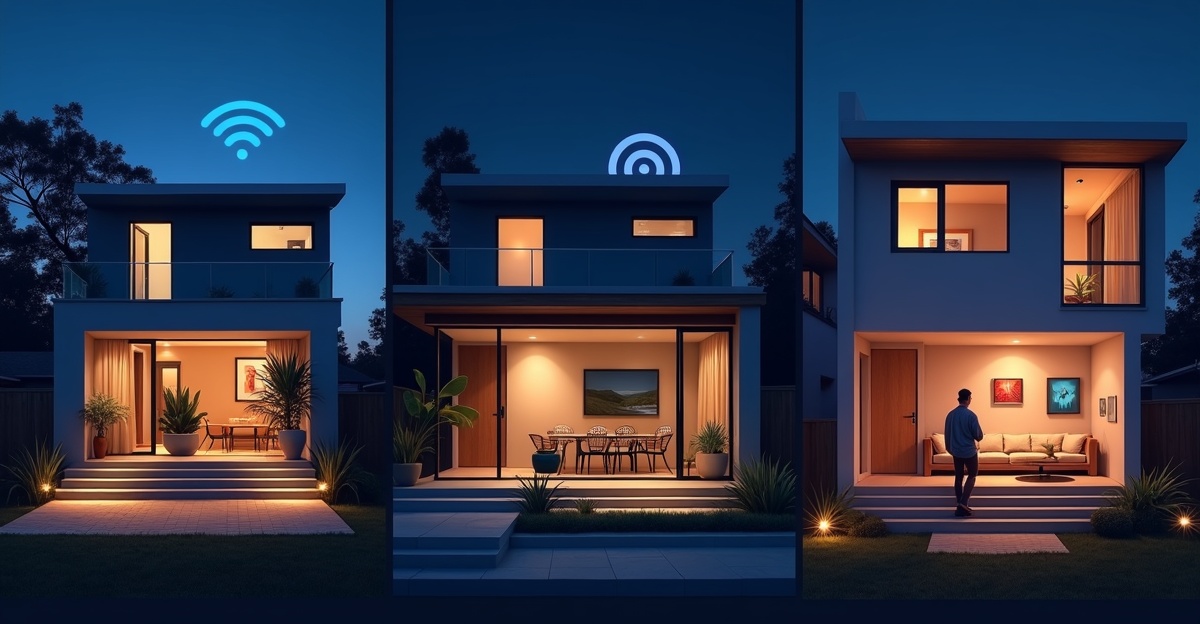
Exploring the Different Types of Smart Lighting Systems
Choosing the right smart lighting system is a lot like choosing the rhythm for your home’s nights and mornings. It’s not just about brightness—it’s about control, simplicity, and the way your lighting fits into everyday life. Let’s break down the three main types of smart lighting setups: Wi-Fi-enabled, Bluetooth-controlled, and hardwired systems. Each offers a unique way to light up your space, whether you’re after total automation or simple, steady reliability.
Wi-Fi-Enabled Smart Lighting
Think of Wi-Fi setups like a remote control you can use from anywhere. With these lights, we get full access straight from an app on our smartphones or tablets—whether we’re upstairs in bed or stuck in traffic. They’re perfect for building automation into your routine, syncing with sunrise and sunset, or even changing colors to match seasons or holidays.
Wi-Fi smart lights often pair with voice-control systems like Amazon Alexa, Google Assistant, or Apple’s Siri. And many allow us to set up scenes—say, a gentle glow at dinnertime or a vibrant splash for parties—with just our voice or a tap.
These systems do their best work when our internet is strong. But some can still run scheduled routines or basic settings, even during a brief outage. For full flexibility and control, though, a reliable connection is key.
Lights that use Wi-Fi are a great choice if we want:
- Full remote control over brightness, timing, and color
- Integration with smart home hubs or voice devices
- Scheduled routines and automation that adapt to our daily lives
For folks thinking long-term, investing in permanent fixtures controlled over Wi-Fi can also positively impact your property value. Here’s how permanent smart lights increase home value over time.
Bluetooth-Controlled Smart Lighting
Bluetooth smart lighting puts the power in our pocket—literally. These lights communicate directly with a nearby smartphone or tablet. No Wi-Fi needed. No cloud service or network setup, either. That makes them easy to install and control, especially in spaces like patios, garages, or second homes where we want local control and simplicity.
Think of Bluetooth as reaching for a light switch when you’re standing nearby. Bluetooth lights respond quickly and work well for smaller areas, though they can get finicky with distance or obstacles like thick walls. Some systems also allow grouping, so we can set up multiple lights to turn on together or dim as one.
These are great if we need:
- A simple, app-based solution without relying on Wi-Fi
- Direct control from a single device nearby
- A fast, plug-and-play way to bring glow to our outdoor corners
People often ask about permanent lighting and whether it needs Wi-Fi. Bluetooth gives us a clear answer—smart lighting without internet is absolutely possible.
Hardwired Smart Lighting Systems
Hardwired systems are a beautiful blend of old-school strength and modern flexibility. They’re installed with physical connections, often during construction or major remodels, and many are built to last through weather, seasons, and heavy use. Some come with timer boxes or low-voltage transformers, while others include discreet smart controllers for app-based fine-tuning.
This type of system doesn’t rely on constant signals from Wi-Fi or Bluetooth. Once programmed, it runs steady on its own—like a well-tuned machine. For homeowners who love consistency, this is the smart option that doesn’t ask for app connections or updates. Just set it, and forget it.
Hardwired outdoor smart lighting shines if we:
- Prefer long-term reliability and durability
- Want something discreet, like under-eave lighting, that’s installed directly into our home’s structure
- Need smart timers or basic programming without apps or internet dependence
Control Options: App Control vs Direct Use vs Automation
Every system gives us a slightly different way to turn the lights on—and here’s how they stack up:
- Mobile Apps: Wi-Fi and some Bluetooth systems offer app control. Great for adjusting colors, creating scenes, or setting timers—even while we’re away.
- Direct Control: Bluetooth lights or hardwired setups often use direct commands—think switch flips or phone control within a short range.
- Automation: Wi-Fi lighting excels here. We can automate based on time of day, motion, or even weather conditions. Some hardwired systems offer built-in timers, too.
If we’re comparing Wi-Fi vs Bluetooth smart lights, the biggest difference comes down to control range and automation. Wi-Fi opens the door to full remote features, while Bluetooth keeps things simple and local. Hardwired outdoor smart lighting, on the other hand, stakes its claim as the dependable choice—no connection drama, just consistent performance day and night.
No matter the style, each one plugs into something deeper—how we live, what we love, and how we want our homes to feel once the sun slips away. For more help picking what fits best, our residential outdoor lighting team is always ready to guide the way.
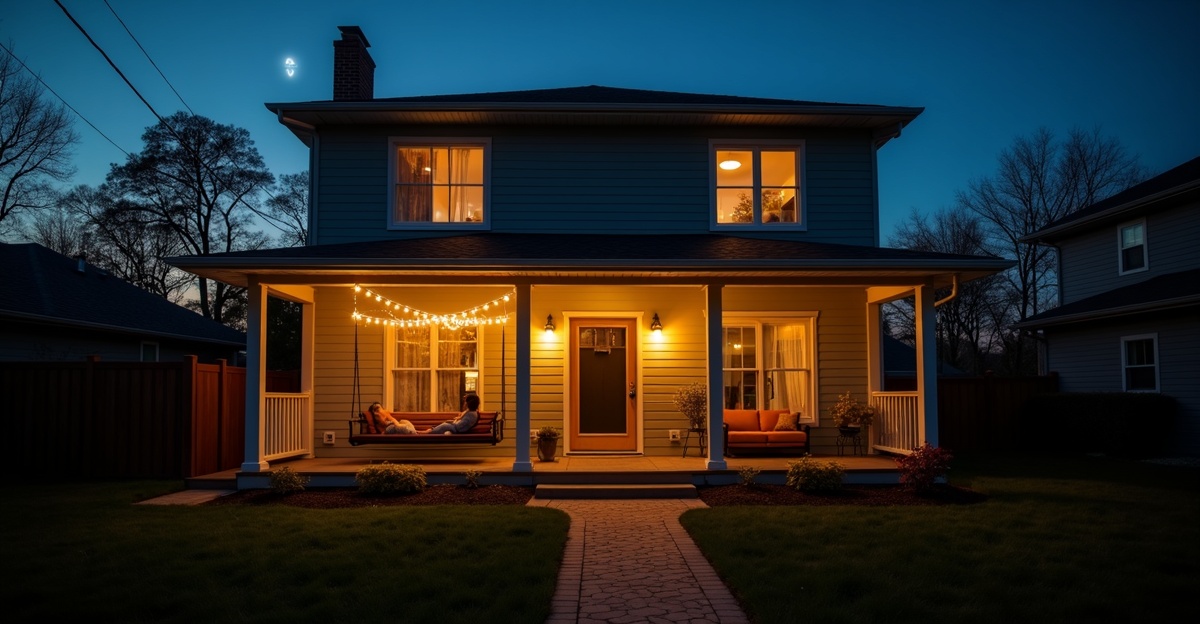
What Happens If the Internet Goes Out?
Losing Wi-Fi is like losing your TV remote—not the whole show. With the right setup, your lights still shine. We know one of the biggest concerns folks have is: do smart lights work without Wi-Fi? The short answer is yes—most smart systems won’t leave you in the dark when the internet cuts out.
Many permanent smart lights are built with memory that stores schedules and preferences internally. That way, even if the connection drops, they still run on the last instructions. You’ll still see your porch lit at sunset or your landscape fully aglow for evening guests. It’s a quiet reminder that your home is always ready—connected or not.
Some systems also use Bluetooth or are hardwired with local control boxes. These don’t rely on Wi-Fi at all for daily operation. That means if our signal flickers, nothing changes outdoors. Your lights continue to shine every evening without a hiccup.
We recommend scheduling your lighting patterns early on—most systems remember these settings with no need for constant internet backup.
Smart lighting setups that keep working when Wi-Fi doesn’t:
- Lights with internal memory to store schedules and colors
- Systems supported by low-energy Bluetooth control
- Hardwired setups that function through a physical control hub
- Manual override options, so you’re never locked out of control
What really gives peace of mind is knowing your lights aren’t fragile, high-maintenance tech—they’re dependable. Whether you’re hosting backyard BBQs, arriving home after dark, or simply enjoying a quiet evening on the porch, your lights just work. Some customers choose options like under-eave lighting for a clean, worry-free install that runs seamlessly year-round.
If you’re still wondering how well these systems hold up, we’ve covered more about how long permanent smart lights last in another post.
Smart lighting should feel like a faithful assistant—there when you need it, invisible when you don’t. Our low-maintenance installs are made for that kind of dependable comfort. For homes needing dependable, simple setups, residential outdoor lighting can bring powerful upgrades without the stress.
So, even when your Wi-Fi takes a break, your home doesn’t. The glow goes on.

Which System Fits You Best? Matching Smart Lighting to Your Property
Choosing the right smart lighting setup is a lot like picking out the perfect porch swing—it needs to be just right for your space and your lifestyle. Whether you’re lighting up late evenings on the deck or setting the tone for your storefront, the key is knowing what works best for your Wi-Fi, your daily routine, and how involved you want to be in managing it all.
Consider Your Setup and How You’ll Use It
Smart lighting should feel like second nature, not another app to babysit. That’s why we always suggest starting with one big question—how connected do we want this to be? Let’s picture a few lighting paths depending on your property and Wi-Fi strength.
For homes stacked with smart gadgets and steady internet, Wi-Fi-enabled lighting systems are a dream. Fast, responsive, and fully integrated, these setups let us manage schedules, scenes, and brightness straight from a smartphone or with voice commands. They’re excellent for families juggling busy schedules or anyone who enjoys adjusting mood lighting from the couch. If this sounds like us, using Wi-Fi smart lighting for homeowners gives both control and flexibility.
But, if our property sits further out—with patchy internet or a more rustic layout—Bluetooth-based lighting or hardwired systems are often the better match. Bluetooth offers a direct device-to-light connection, skipping the Wi-Fi altogether. It’s simple, solid, and perfect for outdoor areas like barns, detached garages, or remote patios. With no signal hiccups or dropped networks, there’s minimal fuss.
In cases where permanence and zero maintenance are top-of-mind, like for small businesses or outdoor entryways, hardwired smart lighting is the steady, day-in-day-out solution. Owners who rely on consistent branding, evening foot traffic, or safe, well-lit walkways will appreciate the reliability. Smart lighting small business setups that are hardwired mean we won’t have to reset anything or worry about lost connections—it just works.
These scenarios reflect more than locations. They speak to our lifestyle. Are we the kind who loves to tinker with color-changing lights through an app? Or do we want a set-it-and-forget-it approach? There’s no one-size-fits-all, but asking these questions helps narrow it down.
Before Picking Your Lighting, Ask:
- Do we want to control it from anywhere, even while we’re away?
- Is syncing with other smart home devices a must?
- Will the lights connect to just one area, or multiple zones around the property?
- Do we prefer to be more hands-off once the lights are installed?
- Is low-maintenance smart lighting a priority for our peace of mind?
The good news is that there’s a smart lighting system to match every combination of “yes” and “no” above. At Big Pig, we help untangle that decision with real guidance—not confusing tech talk. Whether we’re working on residential outdoor lighting in the suburbs or designing dependable lights for a small café courtyard, we treat each job like we’re doing it for family.
Our technicians look at your Wi-Fi strength, your lighting goals, and your need for customization all in one easy walkthrough. Then we suggest real options that line up with how you live. If your spotlight is security, we’ll focus on solutions that pair with outdoor security lighting. For aesthetics and style, color-changing systems might be right—yes, you can change colors on permanent lights to set the perfect tone.
Still not sure which fit is best? That’s exactly where our team shines. We’re happy to talk specifics or just swap ideas. Lighting your space shouldn’t be complicated—it should feel like flipping a switch on your best-lookin’ self. Reach us anytime through our contact page or check out how permanent lighting might be the smart choice for long-term wow and ease.
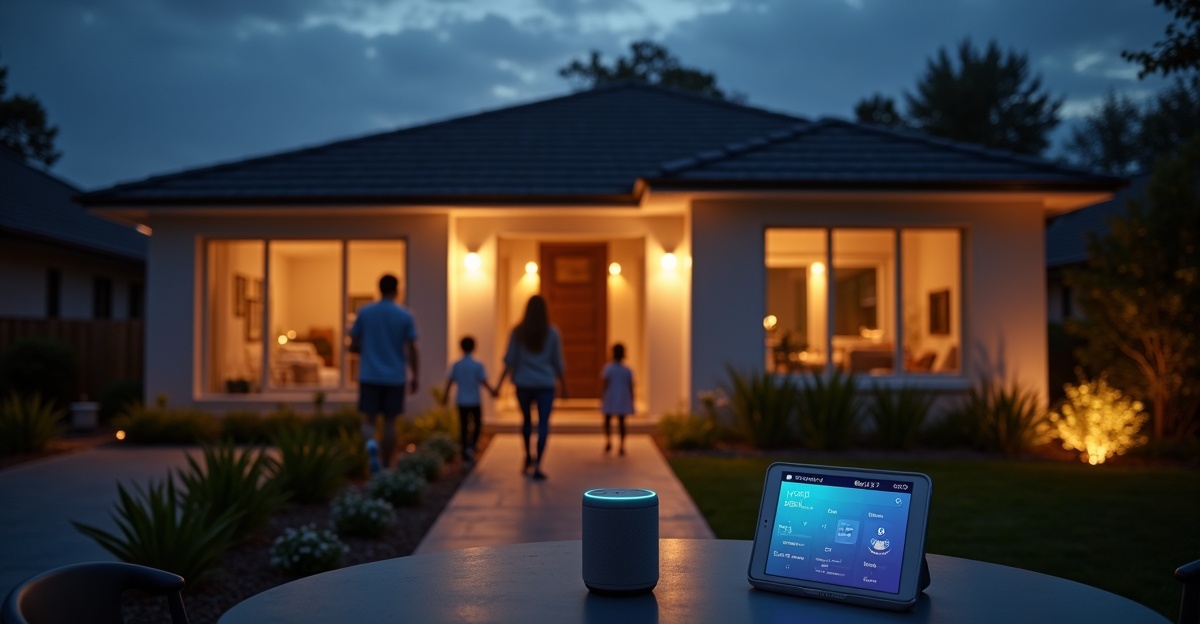
Beyond Control: Integrating with Your Smart Home
Smart home lighting systems do more than turn on and off—they slip right into your life, syncing with your schedule and routines with barely a flick of your finger. Whether we’re cueing up a cozy vibe before friends arrive or setting a storefront’s glow to welcome early shoppers, smart outdoor lighting blends in smoothly.
Wi-Fi-connected permanent smart lights, and even some Bluetooth models, offer powerful integrations that make life brighter and simpler. They play well with voice assistants, phone apps, and even sensors, giving us control that extends far beyond the switch on the wall.
Ways Smart Lighting Integrates Seamlessly
Here’s how smart home lighting systems can connect with daily routines and make our spaces work for us:
- Voice Assistants: Most Wi-Fi-enabled lights work with Amazon Alexa, Google Assistant, and sometimes Apple’s Siri. That means we can say, “Turn on porch lights” or “Dim pathway lights,” and it’s done. No button-pressing, no reaching for remotes—just spoken convenience.
- Scheduling Apps: We can set lights to turn on or off at sunset, at bedtime, or right before we get home. It’s great for saving energy and creating the right feeling at the right time. An evening glow for winding down, a soft morning light for busy families—whatever fits us best.
- Event or Sensor-Based Triggers: Many systems pair with motion detectors, dusk sensors, or even door sensors. Imagine lights turning on when motion is detected in the driveway, or your backyard lighting shifting as the sun dips below the horizon. It’s smart adjustments without the effort.
That kind of seamless control makes outdoor lighting feel like it’s reading the room—or the sky. These integrations don’t just light a space; they tie into how we live in it.
But not every home needs deep integration. Some of us just want dependable lights without apps or assistants. And that’s perfectly fine. The beauty of permanent smart lights is that we can do as much or as little as we like. Whether we’re automating every moment or just appreciating a well-lit entrance, there’s flexibility built in.
For homeowners who love the smart tech experience, permanent lighting is a solid match for smart home systems. We can easily make adjustments with our phone or pair lights with other features, like alarms or garage doors. If we’ve ever asked, can smart outdoor lights make your home more secure—the answer is yes, especially with real-time reactions like light-up alerts when motion is detected.
Permanent fixtures also mean we don’t have to keep hauling out the ladder or restraining cords. Smart seasonal lighting, entryway accents, or backyard ambiance all stay up—and keep us in control year-round, day or night. If we’re wondering how long these systems hold up, they’re built to last anywhere from a decade or more with the right setup.
For those of us who already rely on voice commands to lock doors, change a playlist, or adjust a thermostat, syncing outdoor lighting is the next natural step. But even if we’re newer to smart technology, starting with a simple system that schedules lights automatically can make life feel smoother.
Want a gentle pathway glow that knows when the sun sets? Or maybe bright lights triggered by movement to make front yards safer late at night? That’s where smart connections shine. And if you’re exploring options, we offer under-eave lighting that’s built for smart controls and year-round flexibility.
Smart home lighting systems aren’t one-size-fits-all. Some of us live by routines and like everything connected—lights, locks, speakers. Others just want reliable illumination without fuss. Wherever we fall, the right system should match our habits and home—not the other way around.
And if questions come up, whether about setup or choosing the best option, our customer support team is always ready to help. Because great lighting should feel good, work right, and fit into everyday life—however we live it.

Why Some People Avoid Wi-Fi—and Why That’s Totally Okay
Not everyone wants their outdoor lighting riding on their home’s Wi-Fi. And honestly? That’s a smart instinct.
We talk with folks every day who tell us they don’t love the idea of their lights being tied to the internet. Some worry about security. Others just don’t want to depend on a connection that might lag or drop. A few feel like it sounds complicated—and that’s completely fair.
Let’s clear something up: smart lighting doesn’t need to be complicated to be impressive—it just needs to fit the way we live.
Choosing Smart Without Wi-Fi
There are plenty of reasons why a connection-free setup feels more comfortable. Wireless doesn’t always equal worry-free. Here’s why some of our Arizona neighbors decide to skip the Wi-Fi:
- Security concerns – Some homeowners would rather keep things offline. That way, their lighting isn’t vulnerable to hacking or strange behavior if the network gets compromised.
- Internet reliability – In desert communities, rural setups, or busy households, Wi-Fi can get stretched thin. Choosing a system that functions without the internet means it’ll glow steady—no buffering required.
- Preference for simplicity – Not everyone likes swiping through apps or adjusting settings through the cloud. Some of us just want to flip a switch and know it’s going to work.
The good news? We’ve helped plenty of local homes and businesses light up beautifully without leaning on Wi-Fi.
Hardwired systems and timer-based controls aren’t old-fashioned—they’re dependable and weather-tough. They hold up better to Arizona’s intense heat, dust, and monsoon storms. And if you prefer to keep your tech simple, they’re a dream. No apps, no updates, just brilliant light where and when you want it.
Hybrid systems—which mix wired reliability with optional smart features—offer a nice middle ground. You get control and flexibility, but still enjoy the confidence of local switches or direct inputs when needed.
No matter what system you go with, smart is about choosing what works for your lifestyle. Not every porch or backyard needs the same kind of light show. Some need to shine quietly and just do their job with strength and consistency.
We’ve seen this firsthand on Arizona patios, driveways, storefronts, and rooftops. Folks who opt for non-Wi-Fi systems are still getting thoughtfully placed, energy-efficient lighting that responds to their needs—without relying on an internet connection.
Want a lighting setup without the tech headaches? You’ll want to check out our under-eave lighting solutions—ideal for warm climates and streamlined installs.
Even Without Wi-Fi, It’s Still Smart
Some smart features still work without a full internet connection. Scheduled timers, dimming options, and zone controls can all be handled via local controllers or direct system interfaces. You can still have:
- Elegant curb appeal year-round (lights that blend right into your trim)
- Added visibility for guests or deliveries
- An extra layer of security, even with basic motion sensors
If peace of mind is part of your lighting goals, make sure to explore our outdoor security lighting services—built for function, not fuss.
We’ve installed lighting for hundreds of homeowners across Arizona—and every single one had different goals, concerns, and styles. So we listen first, recommend second. There’s no one-size approach.
Some folks want full app control and color-changing displays. Others want something simple that just lights their walkway and patio. Both are smart. Both depend on choosing the right setup for how you live, cool your home, and spend time outdoors.
It’s also worth noting that permanent lights on your house don’t always need to be internet-connected to be long-lasting or useful. They just need the right install and materials—something we’ve fine-tuned for local temperatures and UV exposure.
We’re not here to push one style over another. We’re here to make sure your lights do exactly what you need them to—on game night, during monsoon season, or when the grandkids run up the sidewalk.
So if you’re feeling hesitant about Wi-Fi-based lighting, that’s not a drawback. That’s good awareness—and we’ve got plenty of ways to design lighting systems that put you in control, no signal needed.
Got questions or ready to explore options? Reach out to us at Big Pig Lighting. We’ll help you light things up your way.

